First Chinese Hull Monitoring System Gains Type Approval
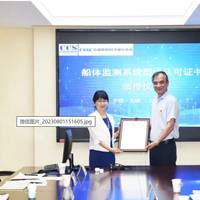
China Classification Society (CCS) has awarded type approval to the nation’s first domestic hull monitoring system.The approval was issued to the China Ship Scientific Research Center located in Wuxi. CCS says the system is of great significance in improving safety performance, extending the service life, reducing operating costs, and improving the efficiency of ships.“The China Ship Scientific Research Center has successfully developed the hull monitoring system, and achieved breakthroughs in key core technologies…
Clean Marine Secures Multi-Vessel EGCS Contract
Clean Marine, developer of Exhaust Gas Cleaning Systems (EGCS), has secured a multi-vessel contract from Inventor Chemical Tankers AS (ICT). The agreement, covering seven 19,900 DWT chemical tankers, marks the launch of the firm’s CleanSOx Compact Hybrid Allstream scrubber to the marketplace. According to Clean Marine CEO Nils Høy-Petersen, the company has been exclusively dedicated to EGCS solutions since its inception in 2006. “Our latest product has been designed to ensure ship owners can achieve simple, cost and space efficient compliance with the IMO’s SOx regulations, coming into force in 2020,” he said. ICT has partnered with Clean Marine and technical manager Diamond Shipmanagement Pte Ltd…
Wärtsilä Scrubbers for New Japanese Bulk Carriers
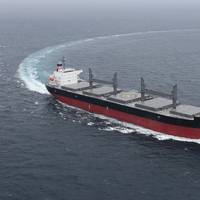
Wärtsilä informs it has been contracted to supply exhaust gas cleaning systems for two new 56,000 DWT Handymax bulk carriers being built at Oshima Shipbuilding Co., Ltd. in Japan for Tokyo based NYK Bulk & Projects Carriers Ltd. (NYK BP). The newbuilds will be the first vessels owned or chartered by NYK Group having exhaust gas cleaning systems installed. By fitting the scrubber systems, the ships will be compliant with the International Maritime Organization’s (IMO) SOx emissions regulations, which come into force in 2020.
Marine Propulsion Market Poised for Growth -Report
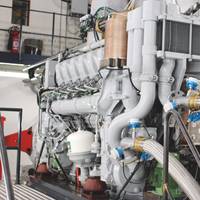
The marine propulsion engine market was valued at $9 billion in 2015 and is projected to reach $12 billion by 2022, growing at a CAGR of 4.1 percent from 2016 to 2022, according to a new report published by Allied Market Research. Diesel propulsion system segment is expected to maintain its dominance throughout the forecast period. Asia-Pacific accounted for the highest share of 51 percent in 2015, and is anticipated to maintain this trend. Increase in production and sales of ships globally and rise in international seaborne trade drives the market growth.
Ocean Signal, AMI Marine Unveil E101V Float-Free EPIRB
Marine communications specialist Ocean Signal and VDR manufacturer AMI Marine will introduce a new float-free EPIRB with integrated voyage data recorder (VDR) memory capsule at this year’s SMM in Hamburg. The Ocean Signal E101V provides a reliable and innovative solution for commercial vessels of 3000+ gross tonnage to store recorded data in a float-free capsule within their VDR systems, as required for compliance with the revised recommendation on performance standards for VDRs. Developed by communication and safety at sea experts Ocean Signal in partnership with AMI Marine, world-leaders in VDR design and manufacturer of marine electronic equipment…
Global Risk Picture for Commercial Shipping Unveiled
Today, Dryad Maritime release the Dryad Maritime Country Risk Map, an online risk portal that has been specifically designed to help commercial teams, CSOs, ship owners and managers optimise their maritime security strategies and identify new trading opportunities through enhanced Maritime Domain Awareness. With a simple interface and concise intelligence, the portal is curated, reviewed and updated on a daily basis by Dryad’s specialist team of analysts. Dryad’s Country Risk Map goes beyond the simple aggregation of data seen in other similar products, with multi-source filtering and verification prior to being enriched with the analysis and insight of Dryad’s professional intelligence specialists.
Coatings Quietly Helping to Control Noise
U.S. Navy’s AGOR Research Vessels are built to be as operationally quiet as possible. That’s where Mascoat’s Sound Control-dB coatings come in. When the U.S. Navy began its design and build program for its newest generation of research vessels, it specified that the vessels had to be as quiet as possible. That’s because a large part of ocean research involves listening and excessive ship noise tends to negate that effort. Achieving the goal of an exceptionally quiet vessel, the vessel’s design team employed a variety of methods to meet the Navy’s exacting standards, choosing systems, defined equipment locations and designed special installation methods with acoustics as a priority. One of those methods involved Mascoat’s Sound Control-dB coatings.
Hapag-Lloyd Advice on the Ban for Imports to Russia
Hapag-Lloyd informs that the Russian government has signed an order to ban import of agri, meat and alimentary products originated from EU countries, USA, Canada, Australia and Norway for one year. As a consequence of this ban, the company see no other alternative but to stop the acceptance of only these commodities originating from EU countries, USA, Canada, Australia as well as Norway with immediate effect and until further notice. In this context, we will continue to accept all other commodities and origins that are not banned by the Russian government. Containers that have already been loaded on our vessels towards Russia and which fall in the definition scope of this ban, will be returned to/discharged at the respective transshipment port, awaiting your instructions.
U.S. Export Reform: New Year, New Rules
Early in the coming year, the U.S. export control regime governing the shipbuilding supply chain will undergo a sea change with the implementation of export reform in the naval and marine categories of the U.S. Munitions List (USML) and the Commerce Control List (CCL). Reforms affecting the aerospace industry(1) were published April 16, 2013(2) and took effect October 15 of this year, and the final rules published on July 8, 2013 for the naval and marine categories will take effect on January 6, 2014. As previously reported,(3) one of the goals of the export reform initiative is to protect the nation’s “crown jewels” with higher export control walls while removing restrictions on less important items and technologies in order to promote, among other things, interoperability of U.S.
Tar Balls Cleaned fromTexas Shoreline
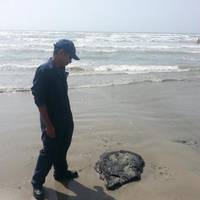
Coast Guard members are working with Miller Environmental Services and Texas General Land Office specialists to clean up naturally occurring tar balls discovered on 20-mile stretch of land from Padre Island National Seashore to the beaches of Port Aransas, Tuesday. Beachgoers contacted Coast Guard Station Port Aransas Sunday to report that tar patties were washing ashore. Sector Corpus Christi deployed personnel from their Incident Management Division to respond. Currently, a team comprised of individuals from the three agencies is surveying the shoreline and removing the tar balls.
Daewoo Develops Gas Supply System
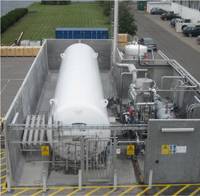
In May 2011, Daewoo Shipbuilding & Marine Engineering developed a new HP-FGS (High-Pressure Fueled Gas Supply) system for MAN-Diesel & Turbo’s ME-GI Engine. Though there are small and middle-size LNG fueled vessels already, this dual fuel engine was designed for large commercial vessels. This HP-FGS system supplies highly-pressurized (about 300 bar) natural gas fuel to an engine. To date, existing FGS systems compress gas to a high pressure. This process requires enormous amounts of electricity and large deck area to accommodate the size of this equipment.
LNG: DSME Unveils High-Pressure Fueled Gas Supply System
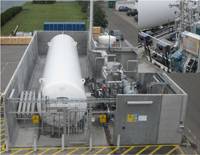
In May 2011, Daewoo Shipbuilding & Marine Engineering (www.dsme.co.kr) has developed a new HP-FGS(High-Pressure Fueled Gas Supply) system for MAN-Diesel & Turbo’s ME-GI (Gas Injection) Engine, and presented it to the market via a road show in Copenhagen, Denmark. Though there are small and middle size LNG fueled vessels already, this dual fuel engine for large commercial vessels which cover most of shipping industry is an original. This HP-FGS system effectively supplies highly-pressurized (about 300 bar) natural gas fuel to an engine.
Feature: Introducing Lean Shipbuilding to U.S. Yards
By Eugene Bradley Jr. Lean times call for "leaner" boats and what better to employ than Lean Shipbuilding, which is known as a proven approach that shipyards can use to improve shipbuilding efficiency. It has the advantages of reducing defects while remaining responsive to change. How does this differ from the traditional method of shipbuilding? Broken down into three steps these components deal with: Push vs. Pull; Batch and Queue vs. Continuous; and Top Down vs. Bottom Up. Each element builds on the others to make Lean Shipbuilding work. Therefore, when trying to implement Lean Shipbuilding, the whole concept should be implemented rather than just a few important pieces. The Lean Shipbuilding Model will then be introduced.
Double Skin is In
The movement of petroleum products on the nation's rivers, lakes, bays and oceans is soon to be regulated of the Oil Pollution Act of 1990. Called OPA 90, this regulation requires many bulk carriers of petroleum products to use double-hulled barges to haul their cargo by 2005 and all to be doubled hulled by 2015. Looking first at the large product tankers and crude oil carriers, 23 product carriers and 17 crude oil carriers must be double hulled by 2005, another 20 product carriers and 17 crude oil tankers need to be double hulled by 2010 and another 13 product and 9 crude oil ships need to meet OPA 90 by 2015. These conversions (or ship retirements) are a major issue impacting the ability of the U.S. to transport crude oil and its refined products.






